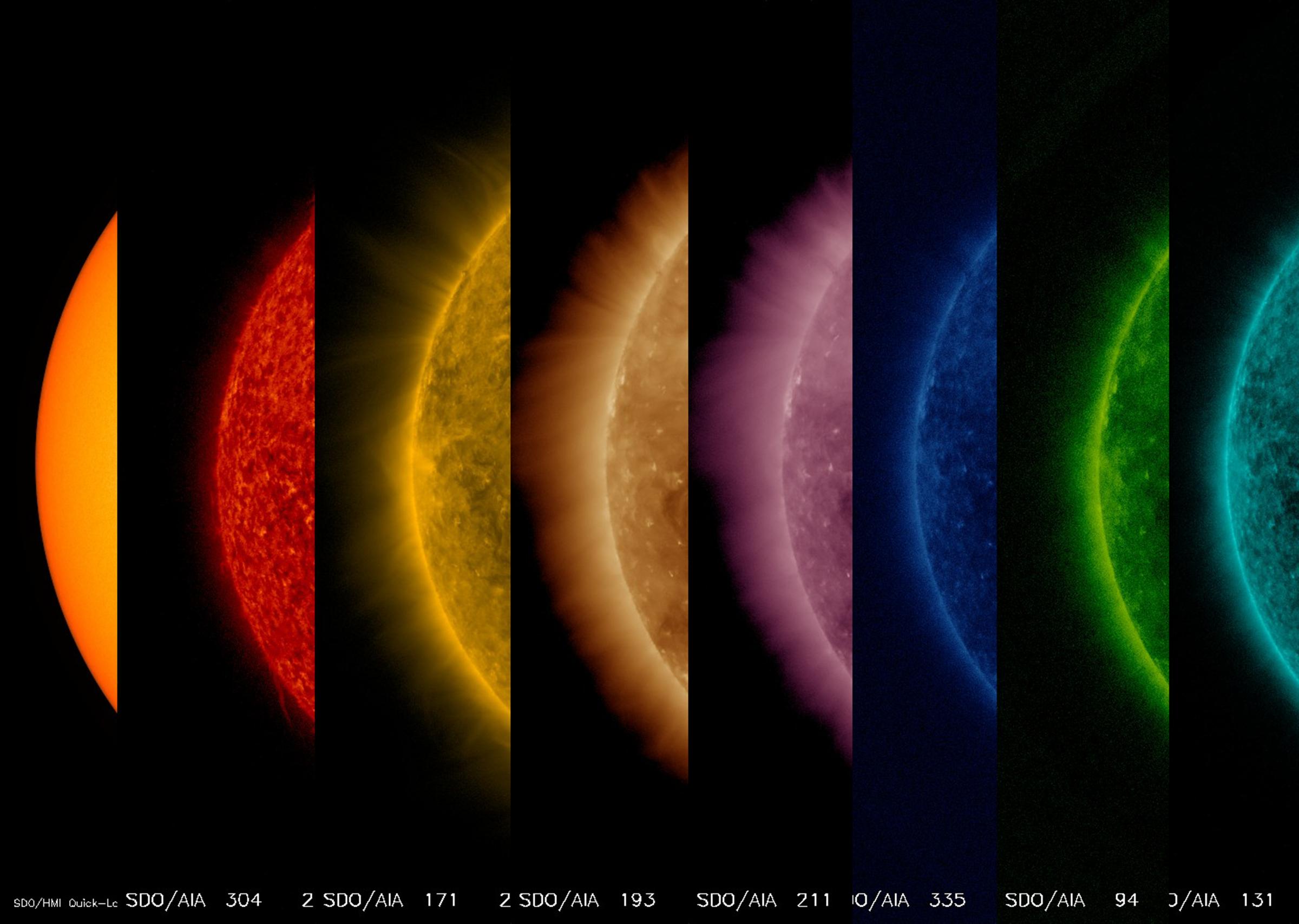Hot, Hotter, Hottest! See the Sun from Its Surface to Upper Atmosphere

This colorful sequence of images, taken on Oct. 27 by NASA's Solar Dynamics Observatory, profiles the sun from surface to upper atmosphere. The first photo shows the surface of the sun in filtered white light, while the other seven images capture different wavelengths of extreme ultraviolet light, according to a statement from NASA.
From left to right, the images examine the sun in order of increasing temperature: the first one shows 6,000 degrees Celsius (10,800 degrees Fahrenheit) at the sun's surface, and the final photo reaches about 10 million degrees C (18 million degrees F). The images reflect that the sun's outer atmosphere, called the corona, is much hotter than its surface, creating a conundrum: Normally when you move away from a source of heat, the environment gets cooler, but the corona doesn't work that way.
While scientists are still exploring the reasons for this temperature difference, evidence suggests the heating mechanics depend on intermittent explosive bursts of heat, rather than on continuous gradual heating, NASA officials said in the statement.
Editor's note: You can see amazing night sky photos by our readers in our astrophotography archive here. If you have a night sky photo you'd like to share with us and our news partners for a possible story or image gallery, please contact managing editor Tariq Malik at spacephotos@space.com.
Follow us on Twitter @Spacedotcom. We're also on Facebook & Google+. Original story on Space.com.
Breaking space news, the latest updates on rocket launches, skywatching events and more!
Join our Space Forums to keep talking space on the latest missions, night sky and more! And if you have a news tip, correction or comment, let us know at: community@space.com.
Nina Sen is a freelance writer and producer who covered night sky photography and astronomy for Space.com. She began writing and producing content for Space.com in 2011 with a focus on story and image production, as well as amazing space photos captured by NASA telescopes and other missions. Her work also includes coverage of amazing images by astrophotographers that showcase the night sky's beauty.
